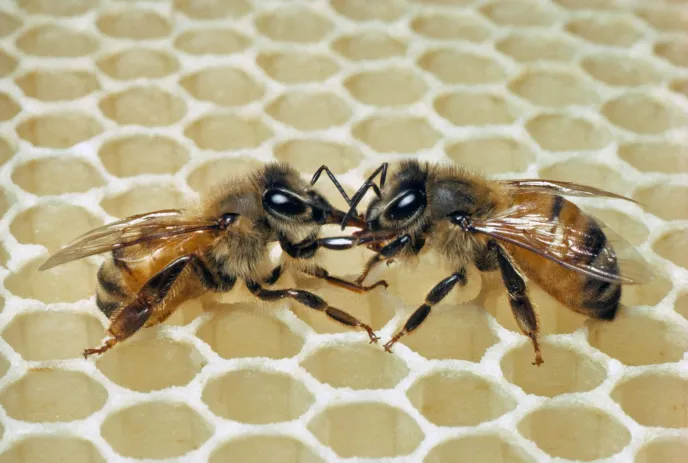
The answer is yes, kinda.
Imagine a bustling beehive during the nectar flow. Forager bees hum home, their “honey stomachs” brimming with nectar, a sugary liquid collected from flowers. They’re greeted by younger bees at the hive entrace. The eager siblings are ready to take the nectar from the foragers.
This friendly exchange, called trophallaxis, is far from messy. The forager bees do “release” the nectar from their honey stomachs, and transfer it to the younger bees waiting at the hive. They do so via a straw-like tube, called a proboscis, mixing it with special enzymes from their bodies. This transfer may happen 5 times before it finds its resting place in the cell. These enzymes work their magic, transforming the watery nectar into the thick, golden honey we know and love.
It’s a beautiful display of teamwork, with each bee playing a crucial role. And just like any well-oiled machine, the hive needs the right balance. The operation slows down if there aren’t enough young bees to receive the nectar. That’s why a strong, populous colony can produce a much bigger honey crop than smaller ones.
So next time you savor that spoonful of sunshine, remember the bee community behind it, and their remarkable talent for turning “kisses” into liquid gold!




